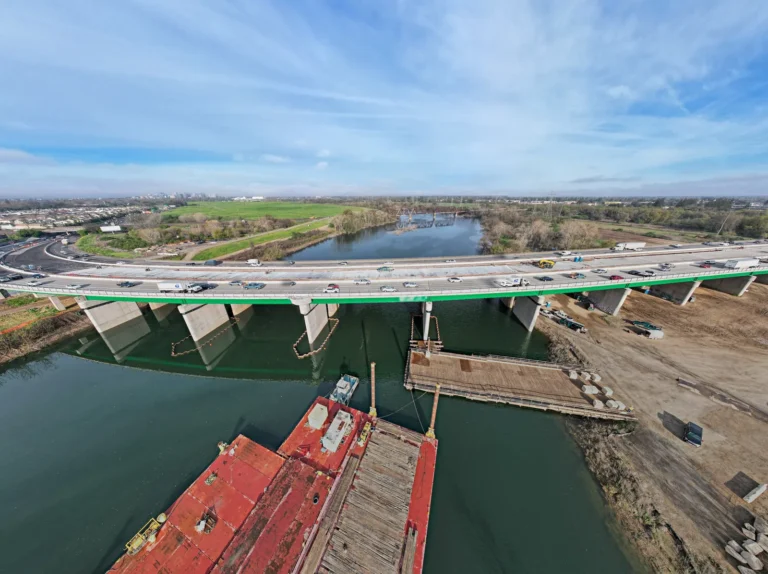How Automation Technology Is Transforming the Construction Sector in Large-Scale Solar Projects
With the rapidly increasing demand for clean energy in the United States, the solar farm construction sector is facing significant challenges related to a shortage of skilled technical labor. Installing thousands of heavy solar panels manually is a strenuous and slow process, hindering companies’ ability to complete projects on time and within budget. In this context, the solar panel installation robots developed by Rosendin Electric, a leading electrical contracting company, have emerged as a revolutionary solution to overcome labor shortages and improve work efficiency on construction sites.
The Skilled Labor Shortage Crisis in Solar Panel Installation Projects
Manual solar panel installation relies heavily on high skills and expertise, coupled with intense physical effort. Each panel weighs between 35 to 40 kilograms, and solar farms often consist of tens of thousands of these panels, making installation a heavy burden on workforce teams. Consequently, as the shortage of qualified technicians persists, delays increase and installation quality declines, negatively affecting energy output and overall project efficiency.
Rosendin Robots: Revolutionizing Speed and Precision in Solar Panel Installation
Rosendin’s installation robots offer an advanced system based on high-precision mechanical control technologies, enabling work execution faster and more accurately than manual labor. Thanks to these robots, workers can install panels at speeds three times faster than traditional methods, significantly reducing physical strain. Moreover, these robots excel at precise alignment of solar panels, enhancing energy capture efficiency and extending the lifespan of solar systems.
| Feature | Technical Detail |
|---|---|
| Increased Speed | Panels installed three times faster than traditional manual installation, substantially shortening total build time |
| Installation Accuracy | Smart sensing technologies ensure perfect panel alignment, boosting solar energy capture efficiency |
| Reduced Physical Strain | Handling heavy panels minimizes physical stress on workers, reducing workplace injuries |
| Scalability | Designed for use in large-scale solar farms, meeting future renewable energy project demands |
| Improved Safety | Fewer accidents due to reduced manual lifting and fatigue, enhancing occupational safety standards |
Technical Details: Solar Panel Installation Robots and Advanced Lifting Equipment
At their core, Rosendin robots rely on a precise mechanical system featuring robotic arms equipped with advanced electric motors and laser (LIDAR) sensors to pinpoint location and distance with extreme accuracy. These arms handle panels weighing up to 40 kilograms, lifting and precisely mounting them on the solar farm’s metal structures.
Additionally, the robots use an intelligent mounting system capable of adjusting to varying angles and slopes of surfaces to ensure optimal panel orientation for maximum sunlight absorption and peak energy production. Operators control these robots via handheld control panels, allowing real-time setting adjustments and quality monitoring, ensuring adherence to the highest construction standards.
As a result, human error rates drop significantly, while the durability and efficiency of solar farms improve noticeably.
Human-Machine Interaction: An Ideal Working Model on Construction Sites
It is crucial to emphasize that these robots are not intended to replace human labor but rather to support and enhance it. Humans operate the robots, oversee execution steps, and verify work quality. This synergy between humans and machines creates a safer, more efficient work environment, accelerates project completion, and lowers operational costs—especially in large projects demanding tremendous time and effort.

Environmental Impact of Robotic Technology in Solar Panel Installation
Furthermore, solar panel installation robots contribute significantly to reducing the carbon footprint of construction projects. By speeding up work pace, they reduce reliance on traditional heavy machinery that consumes large amounts of fossil fuels. Injury rates and rework caused by human errors also decline, minimizing waste generation.
Through this advanced technology, clean energy infrastructure is built faster, directly supporting sustainable development goals and reducing harmful emissions.
The Impact of Robotics on the Future of Construction and Renewable Energy
Ultimately, adopting robots in solar panel installation marks a milestone in construction. This approach opens doors to further automation and artificial intelligence integration, enhancing construction processes to be faster and safer. As demand for clean energy projects grows, these robots provide a practical and sustainable solution to labor shortages, accelerating the shift toward a low-carbon economy.
Conclusion
It is safe to say that the solar panel installation robots developed by Rosendin Electric represent a qualitative leap in the U.S. solar farm construction sector. They support the workforce, improve occupational safety standards, and speed up project execution, all while maintaining the vital role of humans as controllers and quality supervisors.
As solar energy adoption expands, these robots are expected to become essential tools on construction sites, enabling the efficient and sustainable building of clean energy infrastructure.
ArchUp is your platform to follow everything “architectural“: news, analyses, and designs straight from the heart of the modern architectural movement.







